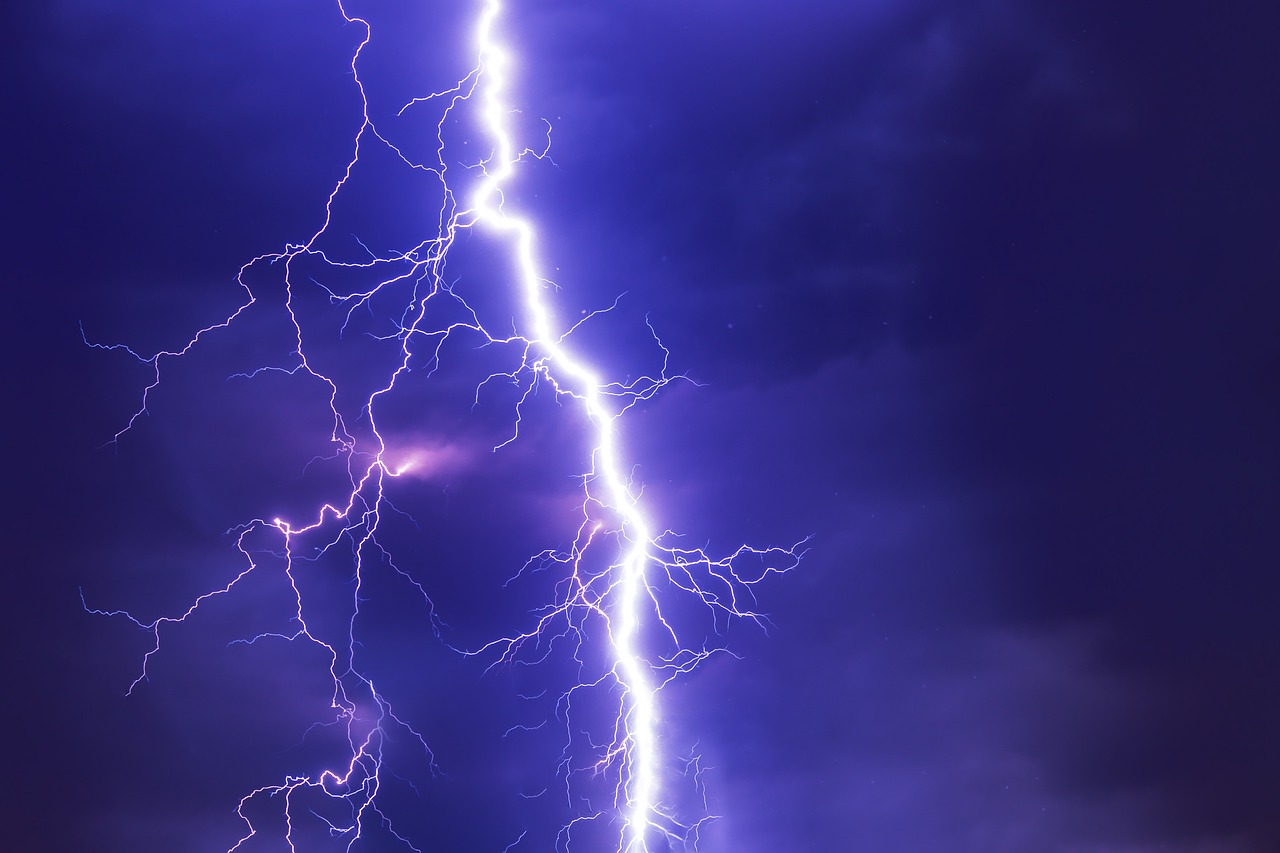- Thunder is the sound caused by lightning. When a lightning bolt travels through the air, it opens up a small void of space, called a channel. Once the light is gone, the air collapses back in and creates a sound wave that we hear as thunder.
- You can calculate how far away a storm is by counting the seconds from when you see the lightning to when you hear the thunder. For every five seconds, the storm is approximately one mile away.
- The term for the fear of thunder and lightning is “astraphobia”.
- Thunder is not only heard during thunderstorms. It can also occur during volcanic eruptions or heavy snowstorms, which are known as thundersnow.
- While we usually hear thunder as one big rumble, each bolt of lightning can actually cause multiple sounds of thunder, depending on the distance and intensity of the lightning.
- The temperature of a lightning bolt can reach up to 30,000 Kelvin (53,540 degrees Fahrenheit), which is five times hotter than the surface of the sun.
- The speed of sound is around 767 miles per hour. Because light travels faster than sound, we see the lightning before we hear the thunder.
- The island of Java is the most thundery place on Earth, with an average of 220 thunderstorm days per year.
- “Thunder” is derived from “Thor,” the Norse god of thunder. Thor was said to create thunder and lightning by striking his hammer.
- Thunder can’t exist without lightning, as it’s the rapid heating and cooling of air by the lightning bolt that causes the thunder.
- Under certain conditions, thunder can cause a sonic boom. This happens when the sound of the thunder is concentrated along the path of the lightning.
- Thunder isn’t typically heard more than 15 miles away from the location of the lightning strike.
- The intensity and loudness of the thunder depends on the temperature and humidity of the air.
- Thunderstorms are more likely in the spring and summer months and during the afternoon and evening hours.
- Sound travels slower in cooler air. That’s why the rumbling of distant thunder is prolonged.
- Continuous or “rolling” thunder, lasting more than a few seconds, is generally a result of the echo from multiple thunder noise sources at varying distances from the listener.
- The loudest thunder ever recorded was 108 decibels, roughly equivalent to a live rock music concert.
- Thunder can’t hurt you. It’s the lightning that’s dangerous: an average of 49 people are killed each year in the U.S. by lightning strikes.
- Thunder has been used in several cultural and religious practices. In some cultures, it’s considered a sign from the gods.
- During a thunderstorm, animals can often sense the incoming weather change before humans. This is because they can hear the infrasonic sound pulses that thunder makes, which are too low-pitched for humans to hear.
Facebook Comments


































